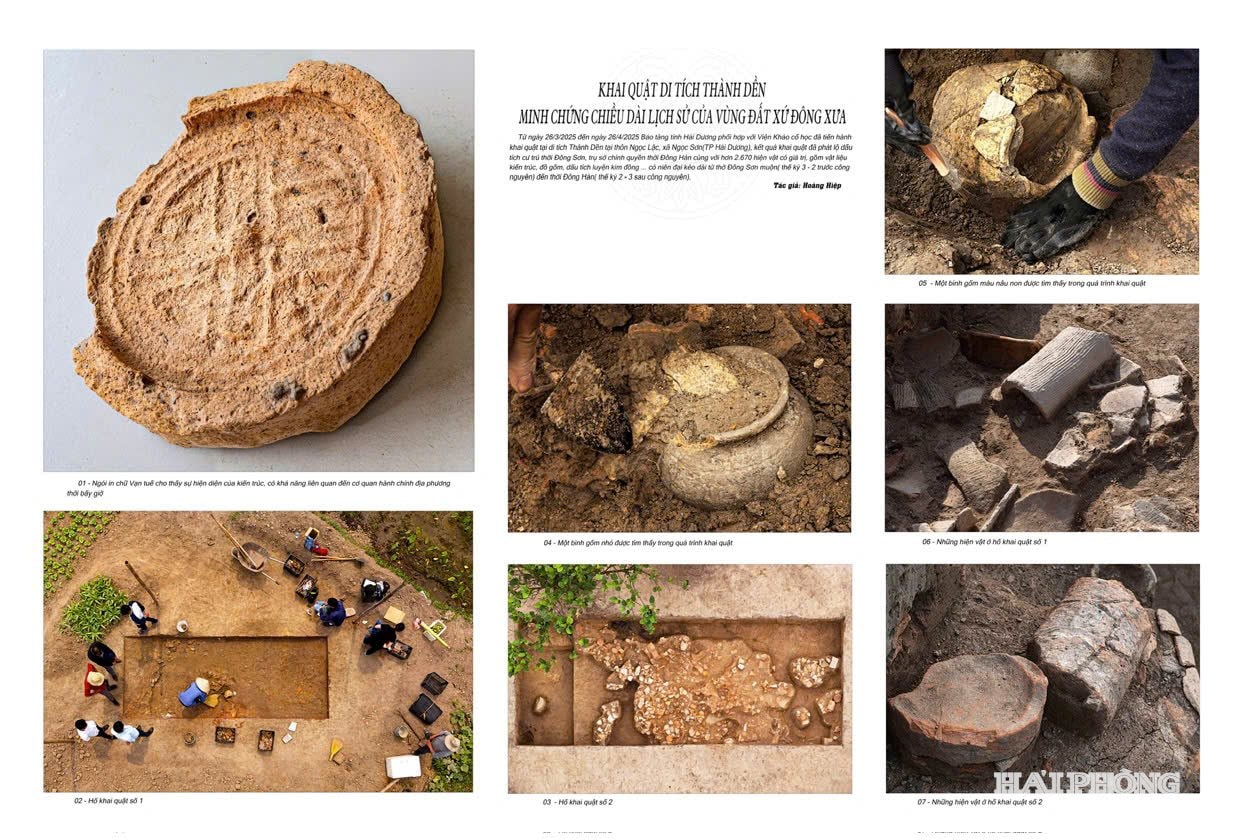
Historical story
The photo collection "Excavation of Thanh Den relic - proof of the historical length of the ancient Dong land" includes 7 photos, selected from 700 photos taken by artist Hoang Hiep during the excavation of Thanh Den relic by the Institute of Archaeology and the former Hai Duong Provincial Museum in the old Ngoc Son commune (now Tan Hung ward, Hai Phong city) in April 2025.
The photo series won the consolation prize in the Hai Phong City News and Art Photography Contest 2025 and was displayed at the Photo and Documentary Exhibition "80 Years - Forever Echoing the Epic of Independence" at the Eastern Cultural Center, celebrating the 80th anniversary of the August Revolution and National Day September 2, attracting the attention of viewers and experts.
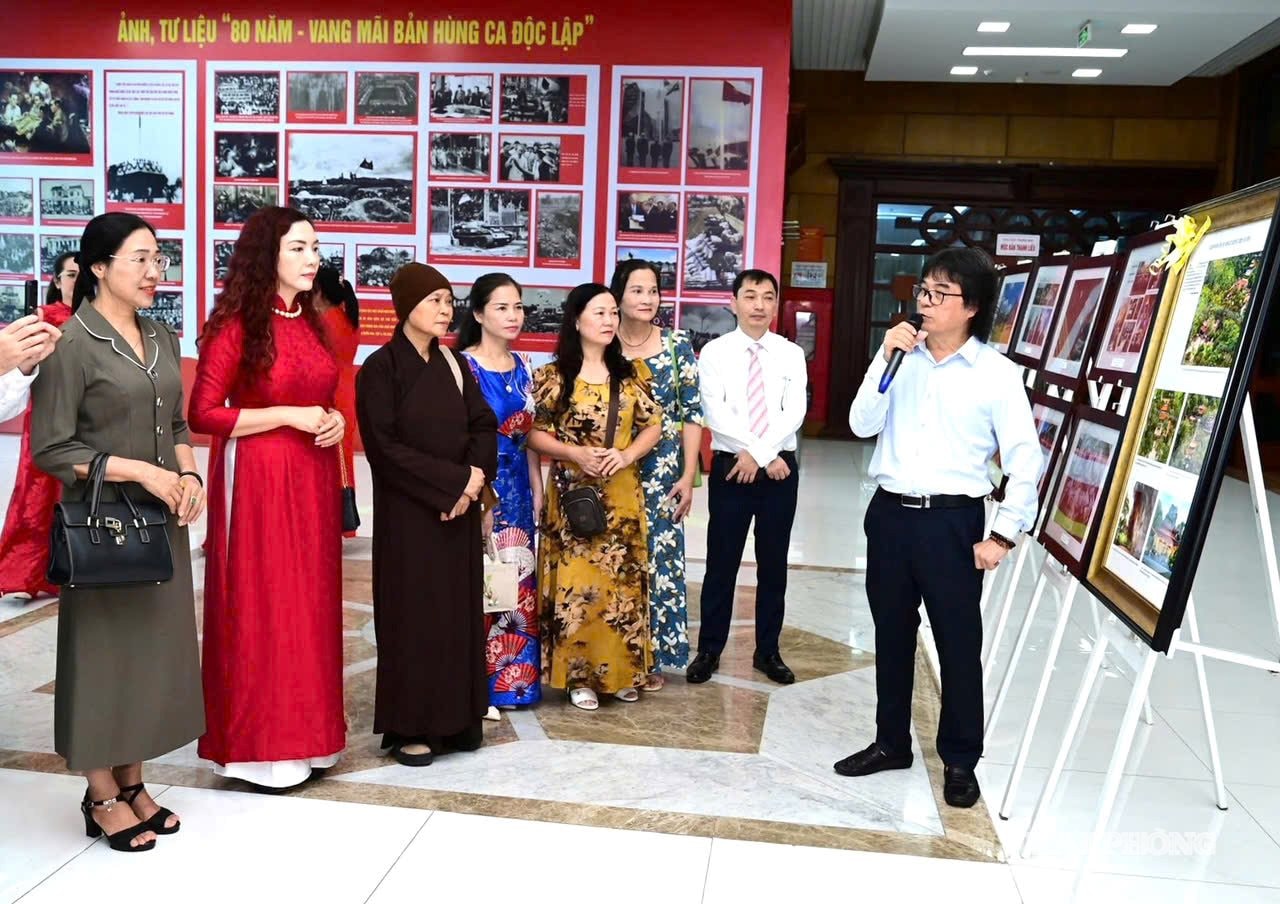
7 highly general photos include: tiles printed with the word "long live"; ceramic vases and some artifacts; excavation pits No. 1 and No. 2... These are typical photos, telling the historical story associated with 2,670 artifacts from the Eastern Han Dynasty and 199 artifacts from the Dong Son Dynasty.
During the archaeological process, experts found many pieces of tubular tiles and flat tiles, printed and glazed hard pottery, iron nails, pieces of copper rust, copper slag, drops of copper solution, ceramic balls, etc. The relics and artifacts found show the inheritance and continuous development from the Dong Son period to the Eastern Han period in the Thanh Den area. According to archaeological experts, tiles printed with the word "long live" show the presence of architecture, possibly related to the local administrative agency at that time.
From the stratigraphic relationship and analysis of the excavation relics, archaeologists and experts initially determined that Thanh Den was a densely populated residential center of the Dong Son period before the introduction of Han culture. Thanh Den had two successive development stages, the late Dong Son period from about the 3rd - 2nd century BC (about 2,200 to 2,300 years ago) and the Eastern Han period to the 2nd - 3rd century AD (about 1,700 to 1,800 years ago). During the Dong Son period, this was a densely populated area. Under the Han Dynasty, Thanh Den was the district headquarters of Giao Chi district.
“Artist Hoang Hiep has recorded valuable sources of information in images, helping to display, introduce and promote the heritage values of Hai Phong City Museum in a richer way,” said Mr. Do Dinh Quyet, Deputy Director of Hai Phong Museum.
This is also one of the rare times that local photographers take photos of archaeological excavations.
Still many concerns
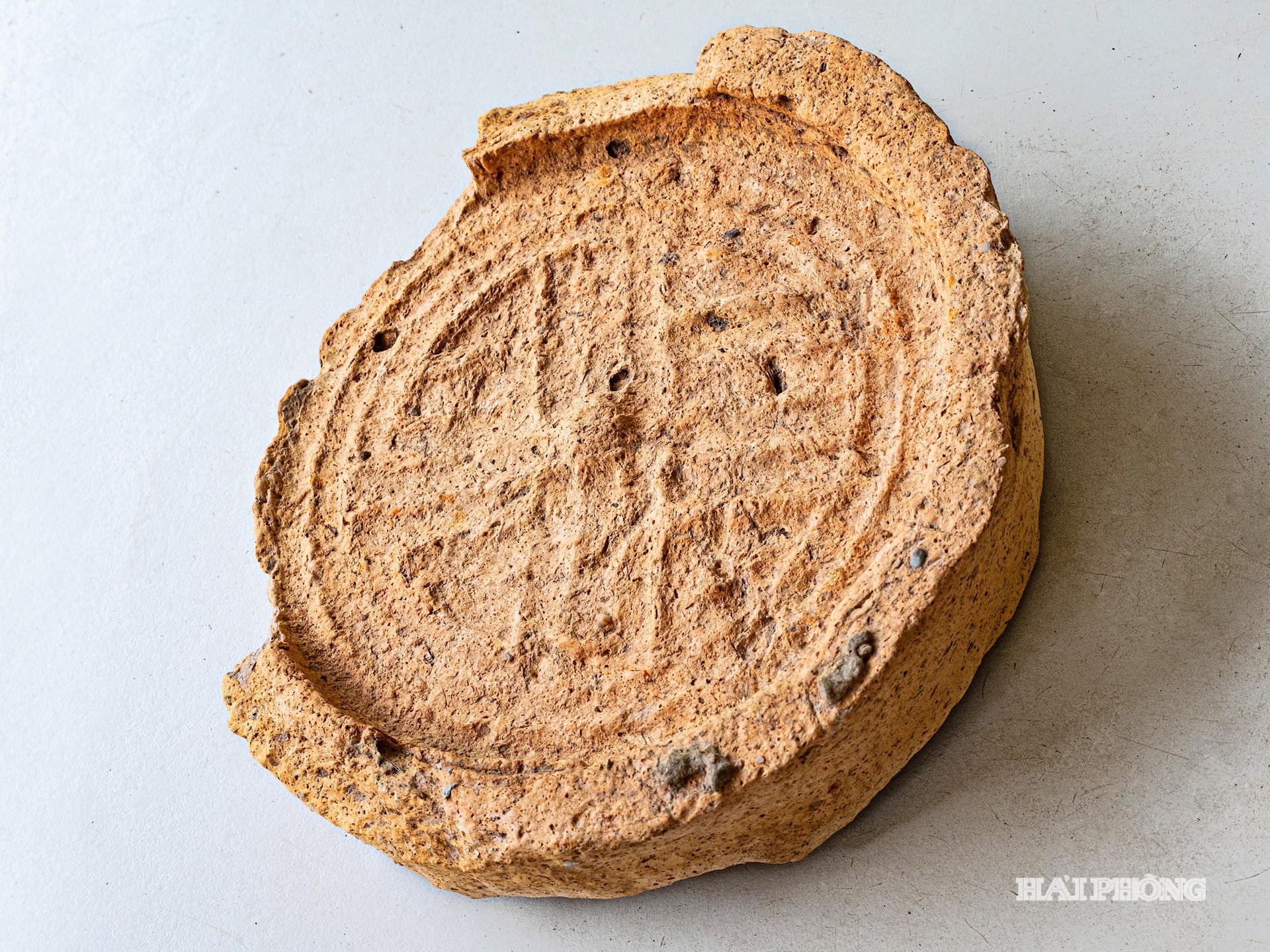
Artist Hoang Hiep said that immediately after receiving information about the archaeological excavation taking place in Ngoc Lac, which is also his hometown, he intended to record it in photos and keep it as a valuable document.
“Although I have many years of experience in the profession, this is the first time I have taken archaeological photos,” said Mr. Hiep.
Therefore, he has prepared the best machines and equipment including flycam and cameras with deep focus. “Photographing archaeological artifacts is different from artistic photography, it is highly topical, presents the essence and keeps information truthfully, and needs to focus on the sharpness of the artifacts,” Mr. Hiep shared.
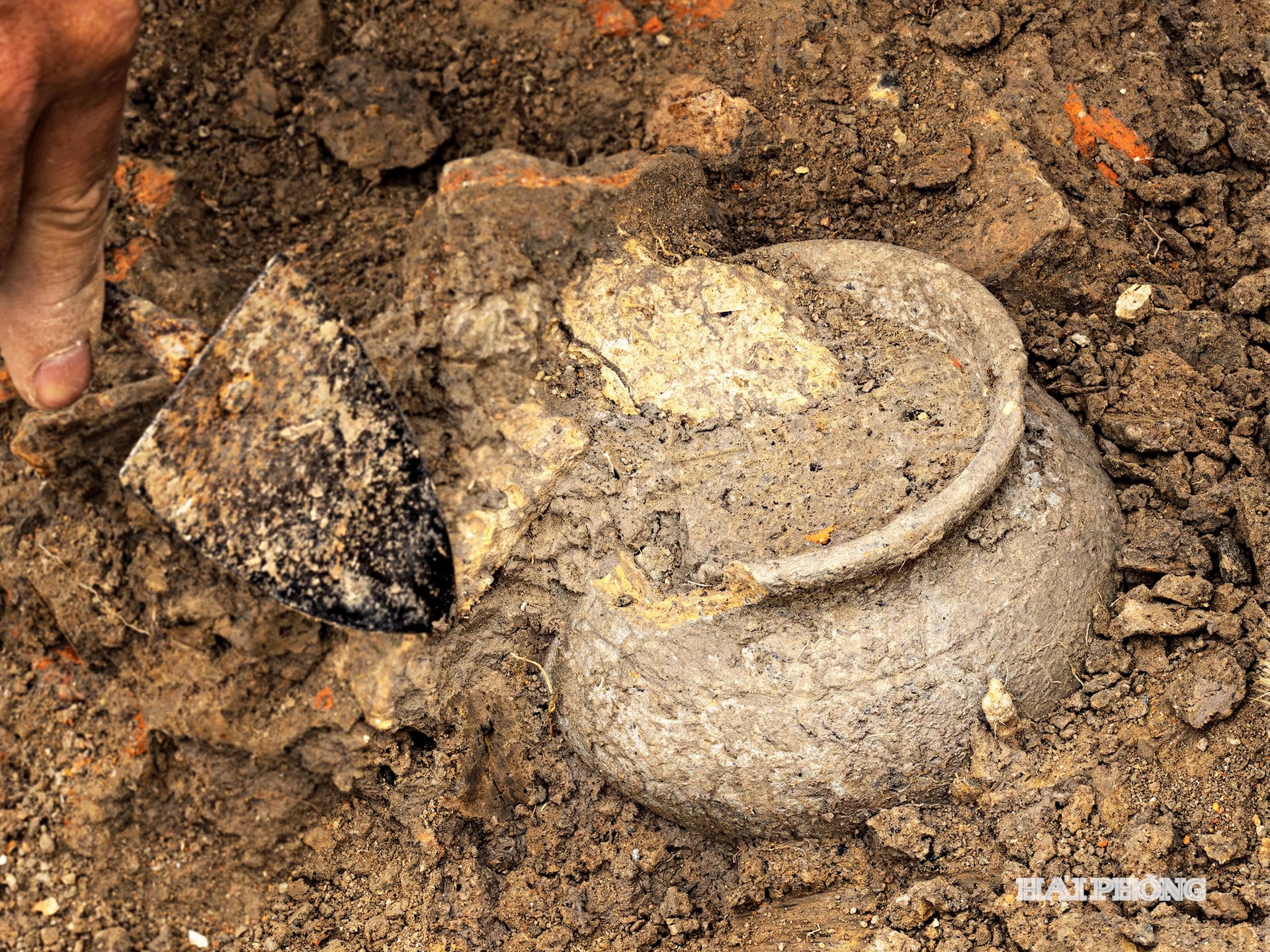
According to artist Hoang Hiep, when he was a child, he and many other people found many pieces of ancient pottery in this area. “Currently, right at the entrance of the village, there is still a stele with unknown content and age. In addition, the elders here still confirm that there was a bridge over the Cau River that was submerged under water,” Hiep said.
During the working process, archaeologists and researchers also shared the opinion that Thanh Den area has great research potential, especially the Dong Son and Dong Han periods. These will be important documents in studying the history and culture of the old Ngoc Son land in particular and Xu Dong in general.
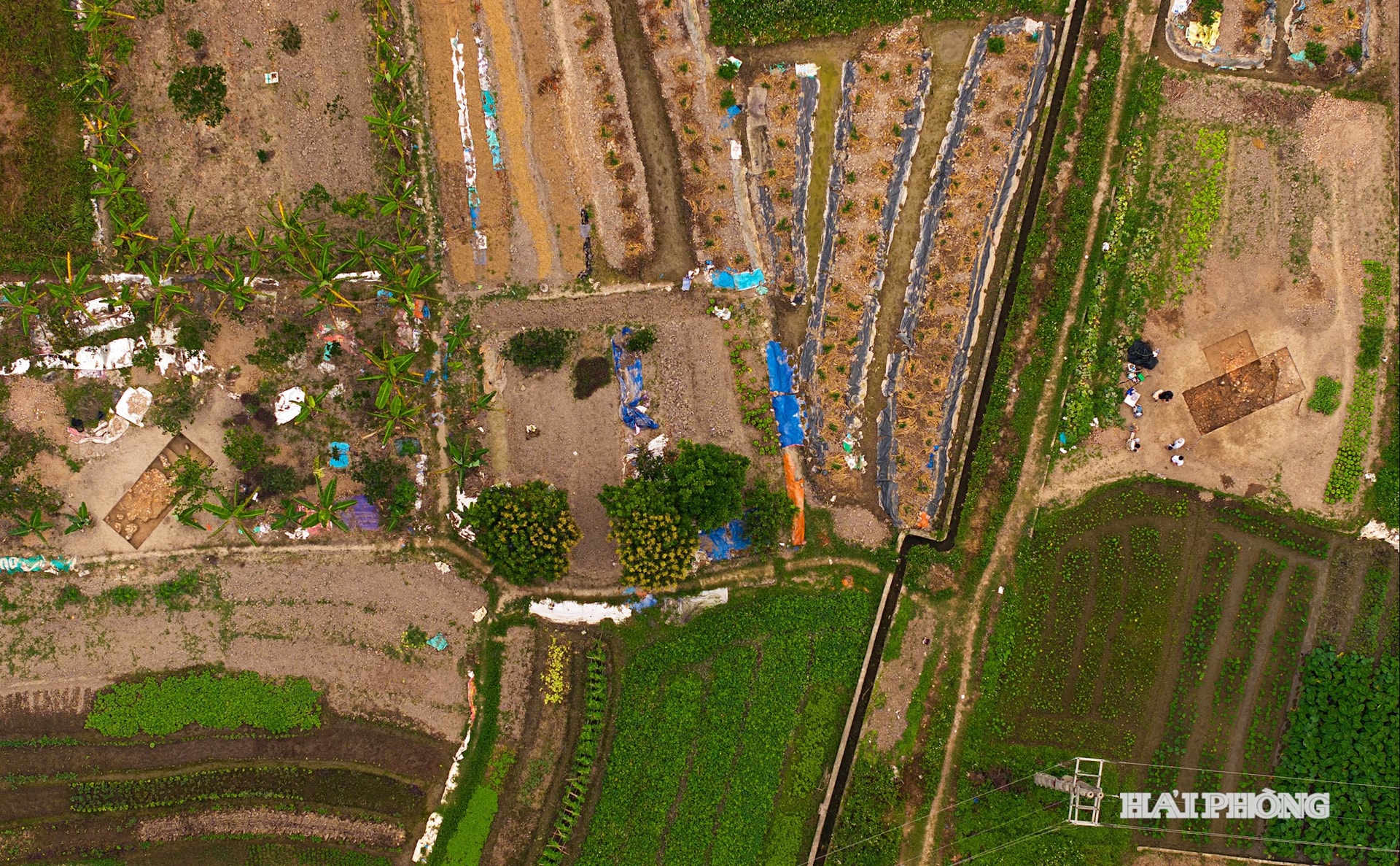
Therefore, he is concerned that in the coming time, there needs to be in-depth, large-scale investigations combined with excavations at many different locations to determine the spatial scope and scale of the relic. Search for architectural works built during the Eastern Han Dynasty; clarify the distribution scope of the Dong Son cultural layer, search for traces of the kiln area and bronze production. Research to determine the nature and age of Thanh Den, the role and position of the relic in the context of Dong Son - Eastern Han relics in Northern Vietnam from the 3rd century BC to the 3rd century AD. From there, restore Thanh Den to preserve cultural values while developing tourism , bringing benefits to the locality. However, doing this requires time and attention from all levels and sectors, especially the cultural sector.
In the immediate future, it is necessary to develop a plan to protect and preserve relics and artifacts to avoid them being damaged or destroyed by construction and farming by the people.
Photographer Hoang Hiep is known to the public for many impressive works about the Eastern region. He won 1 silver medal, 1 bronze medal in the Red River Delta Art Photography Contest, 2 first prizes in the Hai Duong Province Art Photography Contest and had 2 solo exhibitions: "Hoang Hiep and Moments" in 2012; "Peaceful Truong Sa" in 2023.
In 2018, on the occasion of the 45th anniversary of Vietnam - Japan diplomatic relations, he and two Japanese and French photographers had an exhibition about the land and people of Japan and Vietnam.
Source: https://baohaiphong.vn/nhung-thong-tin-quy-gia-tu-bo-anh-khai-quat-thanh-den-522433.html



![[Photo] Students of Binh Minh Primary School enjoy the full moon festival, receiving the joys of childhood](https://vphoto.vietnam.vn/thumb/1200x675/vietnam/resource/IMAGE/2025/10/3/8cf8abef22fe4471be400a818912cb85)
![[Photo] Prime Minister Pham Minh Chinh chairs meeting to deploy overcoming consequences of storm No. 10](https://vphoto.vietnam.vn/thumb/1200x675/vietnam/resource/IMAGE/2025/10/3/544f420dcc844463898fcbef46247d16)



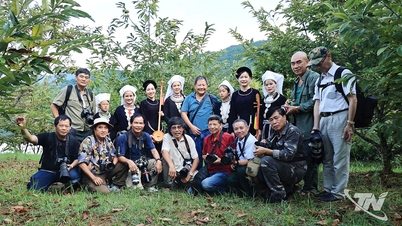



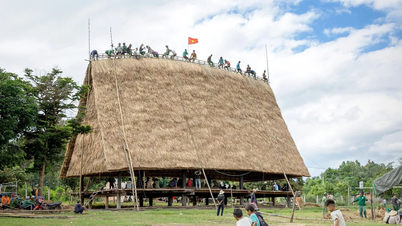






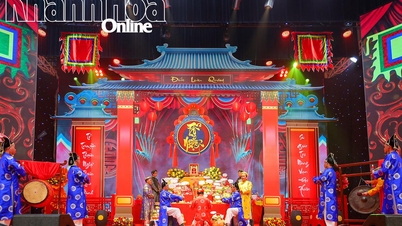

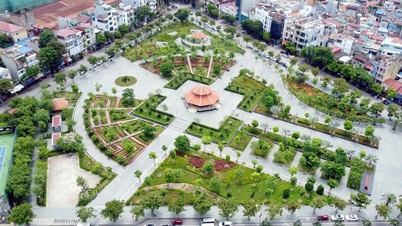
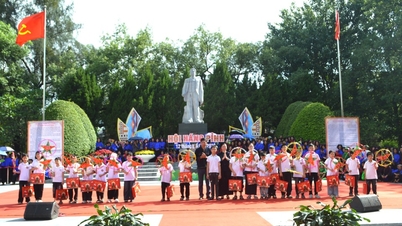

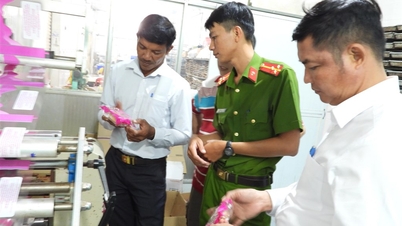



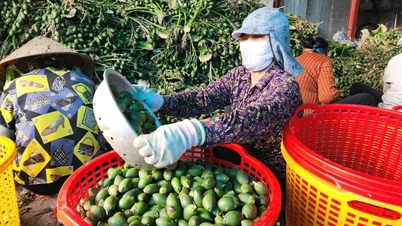




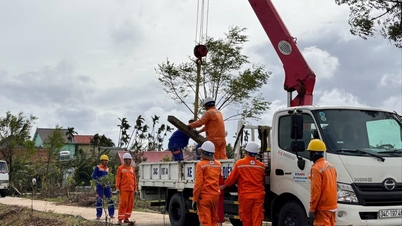
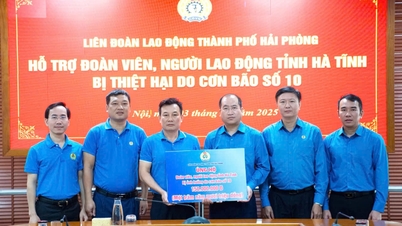



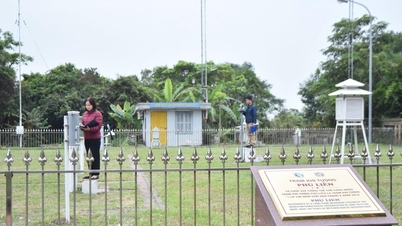


















































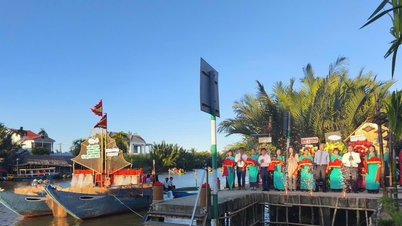

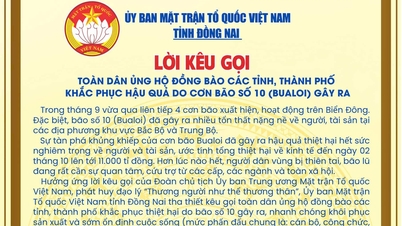

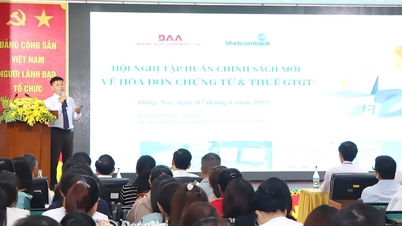
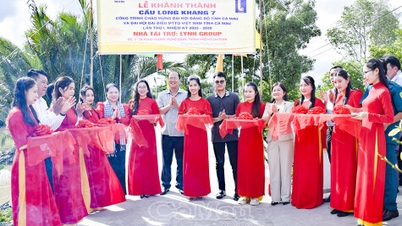

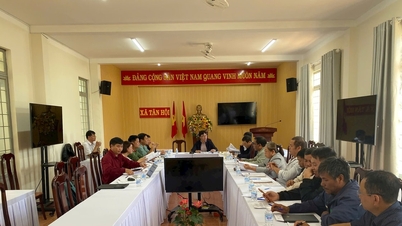

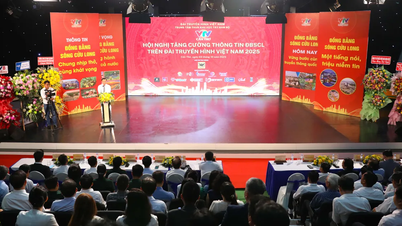












Comment (0)